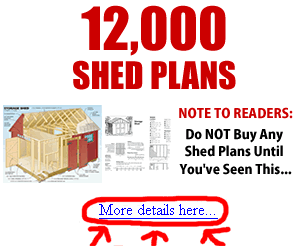Table of Contents
How to Build the Perfect Shed Foundation: A Friendly Guide
Understanding Shed Foundations

Building a shed foundation correctly is crucial. A weak base can ruin even the best sheds. Let’s walk through your options and help you choose the right one for your shed project!
Types of Shed Foundations
There are two big categories:
- On-Grade Foundations:
- Sits directly on the ground.
- Easier and quicker to build.
- Best for small to medium sheds.
- Frost-Proof Foundations:
- Requires digging below the frost line.
- Stronger and more permanent.
- Great for larger sheds or cold climates.
On-Grade Foundation Options: Quick & Easy Bases

Concrete Block Foundation: Simple Support for Smaller Sheds
- What it is: Solid concrete blocks placed in straight, evenly spaced rows.
- Best for: Small to mid-size sheds.
- Quick Tips:
- Use solid blocks, not hollow ones.
- Lay gravel under blocks for stability.
- Level blocks carefully to avoid future issues.
Skid Foundation: Portable and Perfect for Flat Terrain
- What it is: Long wooden beams (skids) laid parallel on the ground.
- Best for: Areas with flat ground.
- Quick Tips:
- Use pressure-treated wood like 4x6s or 6x6s.
- If large skids aren’t available, gang-nail smaller boards together.
- Great if you might want to move your shed later!
Timber-Frame Foundation: Versatile Base for Various Flooring
- What it is: A rectangular wooden frame placed on gravel.
- Best for: Adding various flooring options.
- Quick Tips:
- Use pressure-treated wood rated for ground contact.
- Fill with gravel, bricks, or decking.
- Secure joints with strong screws or spikes.
Frost-Proof Foundation Options

Concrete Pier Foundation: Ideal for Cold Climates
- What it is: Concrete columns (piers) poured into holes.
- Best for: Sheds in areas with freezing weather.
- Quick Tips:
- Dig below frost line to prevent movement.
- Space piers evenly for balanced support.
- Use a string line to keep alignment accurate.
Poured Concrete Slab: The Strongest Base for Heavy Sheds
- What it is: One solid piece of concrete slab.
- Best for: Heavy, large sheds.
- Quick Tips:
- Include a gravel base underneath.
- Add rebar mesh for extra strength.
- Allow concrete to cure fully before building.
Pole-Barn Foundation: Heavy-Duty Support for Large Structures
- What it is: Tall poles set deep into the ground, supporting the shed structure.
- Best for: Very large or tall structures.
- Quick Tips:
- Posts must be pressure-treated for underground use.
- Perfect for uneven or sloping ground.
- Adds serious strength to your shed.
How to Choose the Right Shed Foundation for Your Needs

Think about:
- Shed Size: Bigger sheds need stronger foundations.
- Ground Conditions: Soft soil might need deeper, sturdier bases.
- Climate: Frost-proof is a must in cold regions.
- Future Plans: Want to move it someday? Go with an on-grade type.
Step-by-Step: Building a Simple On-Grade Foundation

Materials:
- Solid concrete blocks
- Gravel
- Hand tamper
- Pressure-treated wood
Steps:
- Clear and level your site.
- Lay gravel evenly across the area.
- Tamp the gravel to compact it.
- Place blocks in a grid layout.
- Check levels as you go.
- Build your shed frame directly over the blocks.
Common Mistakes to Avoid When Building a Shed Foundation
- Using hollow blocks (they’ll crumble!)
- Forgetting to remove grass under blocks
- Skipping gravel base prep
- Ignoring local building codes
Key Takeaways: Building a Solid Shed Foundation
- A strong shed foundation ensures your shed lasts for decades.
- Choose between on-grade and frost-proof based on your climate and shed size.
- Always prep your ground properly—it’s worth the extra effort!







